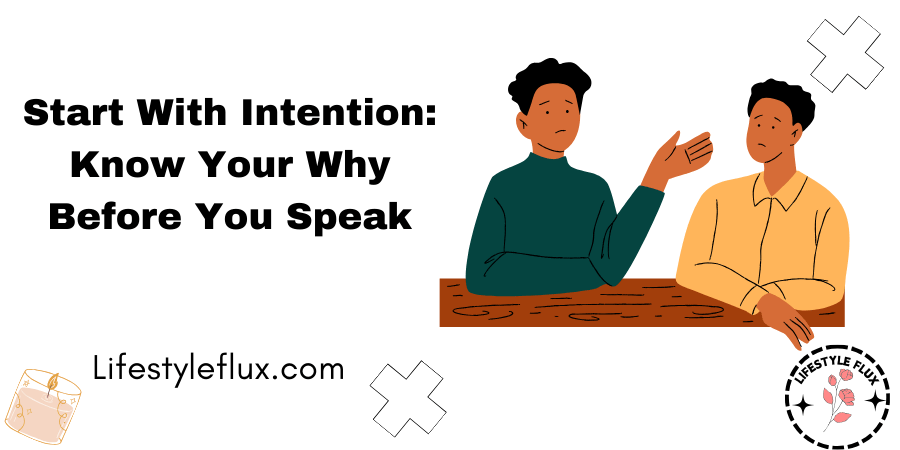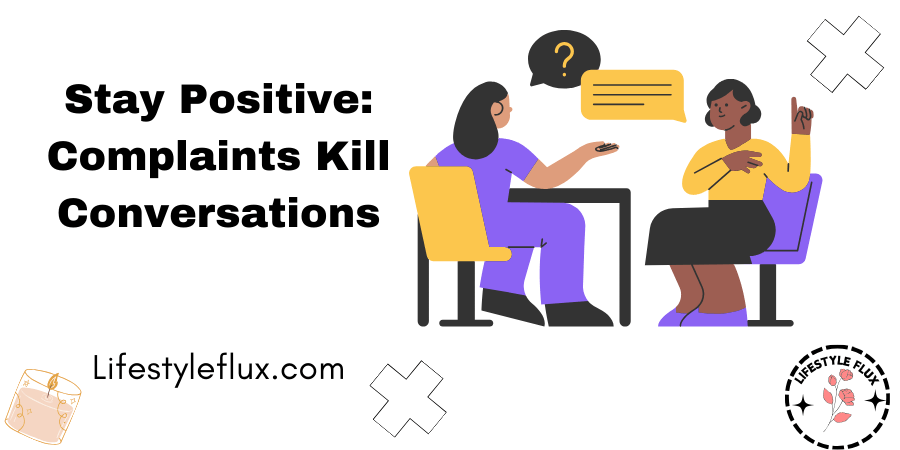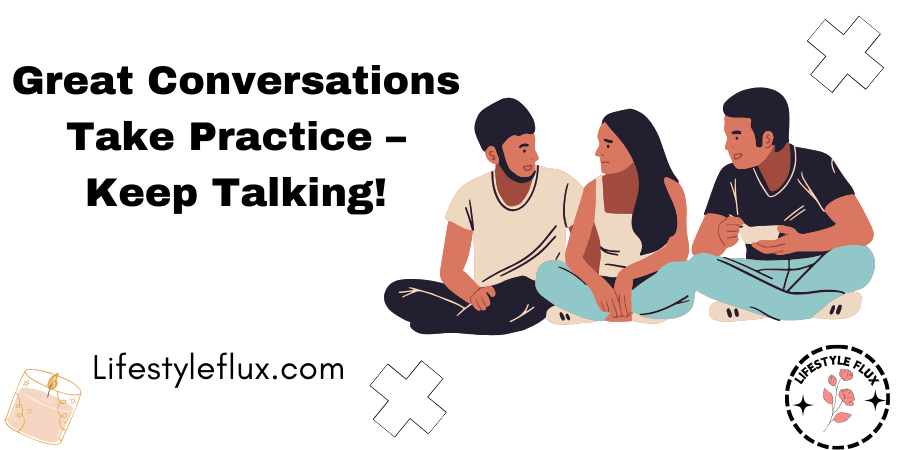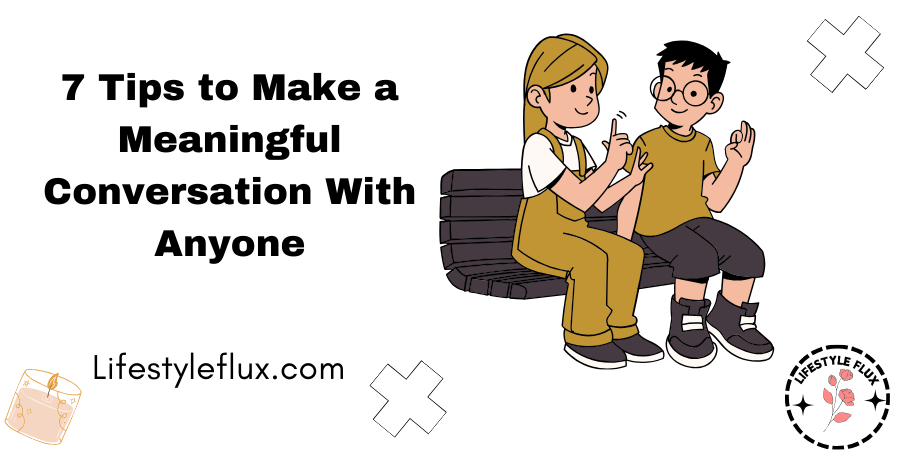Have you ever found yourself struggling to connect with someone during a conversation, unsure of what to say or how to keep things flowing? Building meaningful conversations is an art—and like any art, it requires a bit of practice and the right tools.
Whether you’re looking to break the ice with a new colleague, strengthen a budding friendship, or simply become more confident in social settings, mastering the skill of meaningful dialogue can open countless doors.
In this guide, we’ll dive into seven actionable tips that will not only help you start conversations but also keep them engaging and impactful. Let’s transform the way you connect with others, one meaningful chat at a time.
Table of Contents
1. Creating intention
Amateur conversationalist often sabotages their own interactions by forgetting one important thing. Before you start talking to someone, decide why that conversation matters.
What are you trying to accomplish here, okay? Let’s say, for example, that you strike up a conversation with a new colleague. That exchange could go any number of ways.
If you want to recruit them for something at work, you might bring up the new project you’re starting. If you want to find someone to hang out with, you should probably ask them what their hobbies are.
So, what do these two examples have in common? They both use a specific intention. There’s a goal you want to accomplish. So you know how and where to kick things off.
If you didn’t create that intention, things would go a whole lot differently. You’d ask generic questions, and there’d be lots of awkward pauses. The conversation would go on way too long simply because neither one of you knew when to stop.
You need intention for the same reason that you plan a vacation before you go on it or you pick a destination. Before you start driving, that freedom might seem like a good idea at first.
I’m sure it lets you choose from a limitless number of possibilities. But most of the time, the conversation will be so general that you can’t decide what to talk about, and you end up feeling aimless and awkward.
To solve this problem, you need to narrow down your options, make a plan, and decide on a specific direction.

When you enter any conversation, you should know the reason that you’re there. This approach gives you two very important ingredients for a good conversation.
A subject and a time limit: Having a subject means you always have something to talk about, something to connect with, and something to ask questions about.
When you’re finished, you don’t have to sit around and wonder whether or not it’s time to say goodbye. However, intention doesn’t just smooth over the awkward moments; it makes you a more capable conversationalist.
If you know what to talk about, you’ll naturally act more confident and self-assured that your words will have a purpose, which automatically gives them more weight.
People are more likely to invest in a conversation with you simply because you’re there for a reason. You can easily start every conversation on the right foot by coming in with intention.
2. Intention Checks
Now you know you should create intention, but what does a good intention actually look like? Will anything work? Not every intention produces a good conversation as long as you decide beforehand.
If you approach a new friend at a party, you can’t really ask them to give you a job, or if you strike up a conversation with your boss, don’t expect to find someone to go hiking with.
The conversation and the context they need to line up the best intentions will consider the environment and the type of person that you’re talking to. Otherwise, you won’t get them interested.
You’ll just catch them off guard, so after you decide on your intention, ask yourself a few important questions. First, who am I talking to? Second, what expectations do they have of me?
Third, why are they here? Fourth, is what I’m saying appropriate for this situation? Now, you might not notice how strange something sounds until you force yourself to take a step back.
Your head, a topic might make perfect sense, but the other person has no idea what you’re thinking.
They aren’t drawing the same connections that you are. Context is all they have, so use these simple checks to stop you from throwing people off.
3. Unique Questions
Asking questions is an important part of any lasting conversation. You need them to keep things interesting to stop the conversation from running aground.
If you’re someone who struggles to keep conversations going, then try to ask more questions than you answer. Let the spotlight shine on the other person while you direct things from behind the scenes.
The role of conversational question keeper has a number of advantages. First of all, you just spend less time talking. Questions are almost always shorter than answers.
So you have more time and space to think about what to say next. Questions also communicate genuine interests. Most of the time, they tell the other person you’re excited to know more.
Just make sure your questions are specific and on topic. For example, if someone is telling you a story about how their car broke down, don’t randomly ask if they’ve ever traveled overseas.

Your questions should show that you’re interested and paying attention. That way, the other person feels like you care about what they have to say.
Finally, questions make you seem like a friendlier, more confident person. They show that you don’t need the spotlight. You can be attentive and enthusiastic even if you’re not talking about yourself.
This is actually a pretty rare skill to have; many people lose interest or stop listening if they don’t feel like they’re the centre of attention.
Taking a more selfless approach to the conversation will earn you big points no matter who you’re talking to.
4. Know the Tiers
When you first meet someone new, certain subjects are off-limits. It’s almost like there’s an unspoken hierarchy of topics.
On the bottom, there are super casual ones like sports or the weather, but on the top, there are incredibly personal topics like family and health.
So, how do you know which subjects are appropriate to talk about and which cross the line? Well, it helps break the list of topics down into three separate groups.
The first is perfect for first impressions. These are subjects that everyone knows about, and few people have a personal connection to. Food movies and celebrities are great first-time topics.
They’re safe, easy, and don’t ruffle any feathers. The second tier is a bit riskier; topics like politics, romance, and the news can get people riled up. People often have a very personal stake in whatever they believe, so these subjects are best used when chatting with someone you know.
Finally, the third tier is for the most personal subjects like religion, family, and insecurities. You should really only talk about these with close friends, and it is way too invasive for a casual conversation.
It’s worth saying that these tears aren’t all that clear cuts. Sometimes, a casual conversation can dip into a more personal subject, so if that does happen, just make sure you’re not making the other person uncomfortable.
At the end of the day, comfort matters more than staying within the proper tier.
5. Cut the Complaints
Okay, let’s say you aren’t the biggest fan of your boss. You think he’s annoying, lazy, and abrasive; you’re convinced you could do his job way better than he can.
But if a co-worker walks up and asks you what
you think of your boss. What should you say? Should you start ranting about your deep-seated hatred?
Should you brag about how much better of a leader you are? Ranting, complaining, and gossiping are three of the most common conversational mistakes.
You might be trying to bond over a collective issue or just giving an honest answer. But you’re not doing yourself any favors. In fact, all three of these put an incredibly negative spin on the conversation.

Gossip makes people feel uncomfortable and nervous. Complaints make you look self-centered, while most rants are just plain overwhelming. People won’t want to talk to you when you start complaining.
They’ll start looking for a way out. You obviously don’t want that, so what should you do instead? Well, before someone gets to know you, you sometimes need to bend the truth using that previous example.
Even if you do hate your boss, you should still find something positive to say. You don’t need to make up some elaborate I just show the other the person that you have a good attitude.
So that way, you seem safe and approachable, and you don’t come off as a toxic person. By cutting out complaints, you can keep the conversation positive and fun for everyone involved.
6. Chaining Stories
How do you usually end your stories? Do you wait for the other person to ask for more information? You can effortlessly keep conversations going by ending each story with a question.
This creates a smooth transition between topics while keeping you in the driver’s seat. So imagine you just finished a story about a recent camping trip, and you shouldn’t stop talking when your story ends.
It’s almost like playing catch with someone, but instead of throwing the ball back, you just hold on to it. A question at the end of your story will pass the spotlight back to the other person, and this gives them a chance to be active and invested.
It may sound like a simple change, but that one question can make all the difference.
7. Persistent Practice
Ultimately, the best advice that anyone can give you is to have more
conversations. Talk to more people. Everything on this list will help you improve in some way, but if you want to become a better conversationalist, you need experience.

People don’t always react like you think they will. On paper, one thing might make perfect sense, yet it looks completely different in practice. Because even if small talk is pretty standardized, people’s personalities aren’t. You never really know what someone will say or do until you’re there.
So you need that experience to make you a more flexible socialite. As you slowly get a handle on how people react, you’ll discover more and more opportunities to incorporate these tips into each interaction.
With these under your belt, you can easily hold a conversation with just about anyone.
Conclusion:
Mastering the art of meaningful conversation isn’t just about talking—it’s about listening, connecting, and creating a positive experience for everyone involved.
By approaching interactions with intention, asking thoughtful questions, and steering clear of negativity, you can foster genuine relationships and leave a lasting impression.
Remember, every conversation is an opportunity to learn, grow, and connect.
With persistence and practice, you’ll become the kind of conversationalist who can turn any encounter into a meaningful exchange. So, go ahead—step into your next conversation with confidence and watch the magic unfold!
Resources:
https://www.nytimes.com/2018/09/16/smarter-living/tips-better-conversations.html
https://www.hbs.edu/faculty/Pages/item.aspx?research=7741
https://www.success.com/6-tips-to-rule-the-art-of-conversation
https://www.inc.com/jon-levy/6-things-anybody-can-do-to-have-better-conversations.html

Founder and CEO of Lifestyleflux.com, I bring years of expertise in self-improvement, wellness, and personal development to help you lead a happier, more balanced life. Through practical insights, eBooks, and consultations, I share actionable strategies rooted in experience and a passion for empowering others to unlock their full potential.

